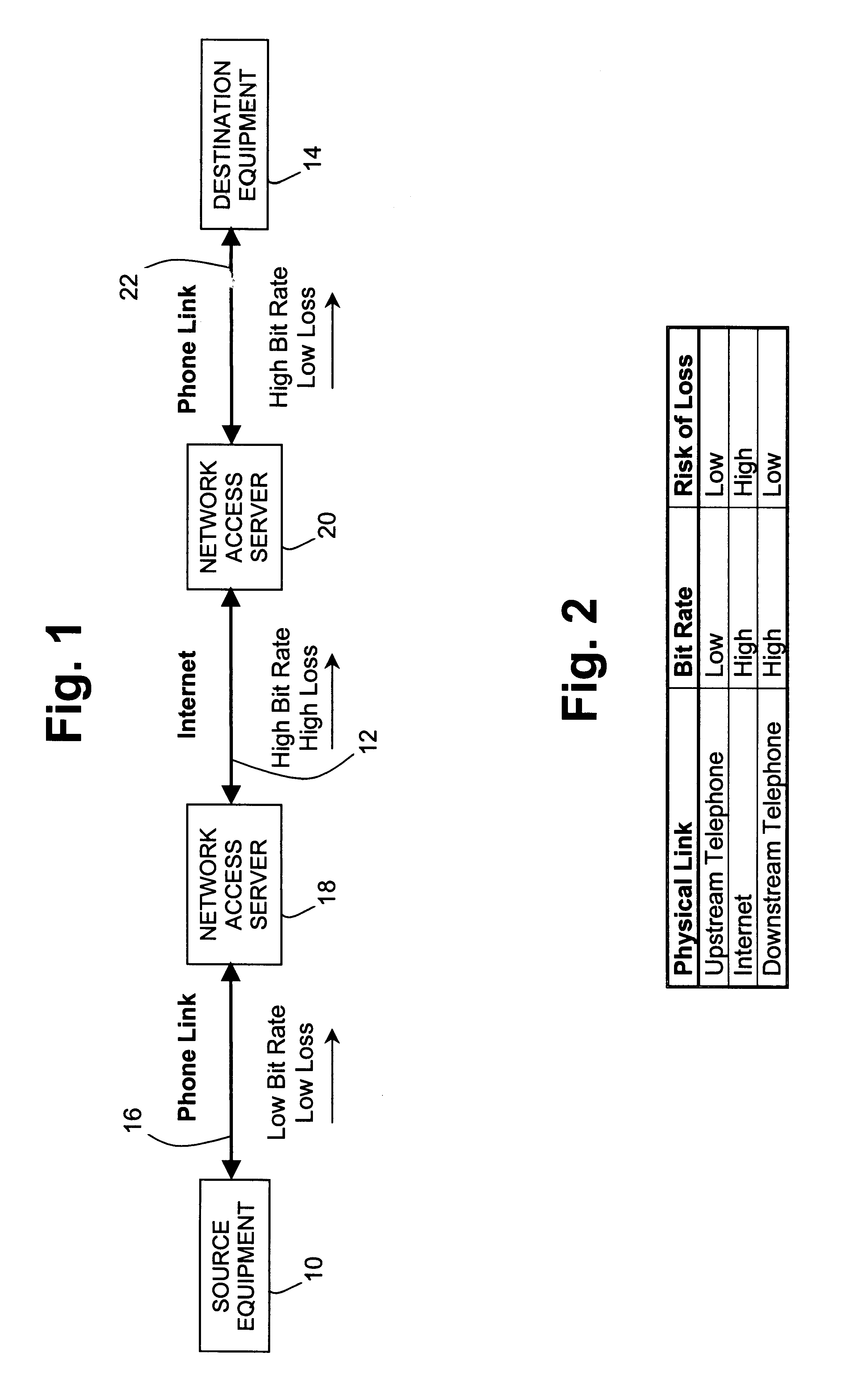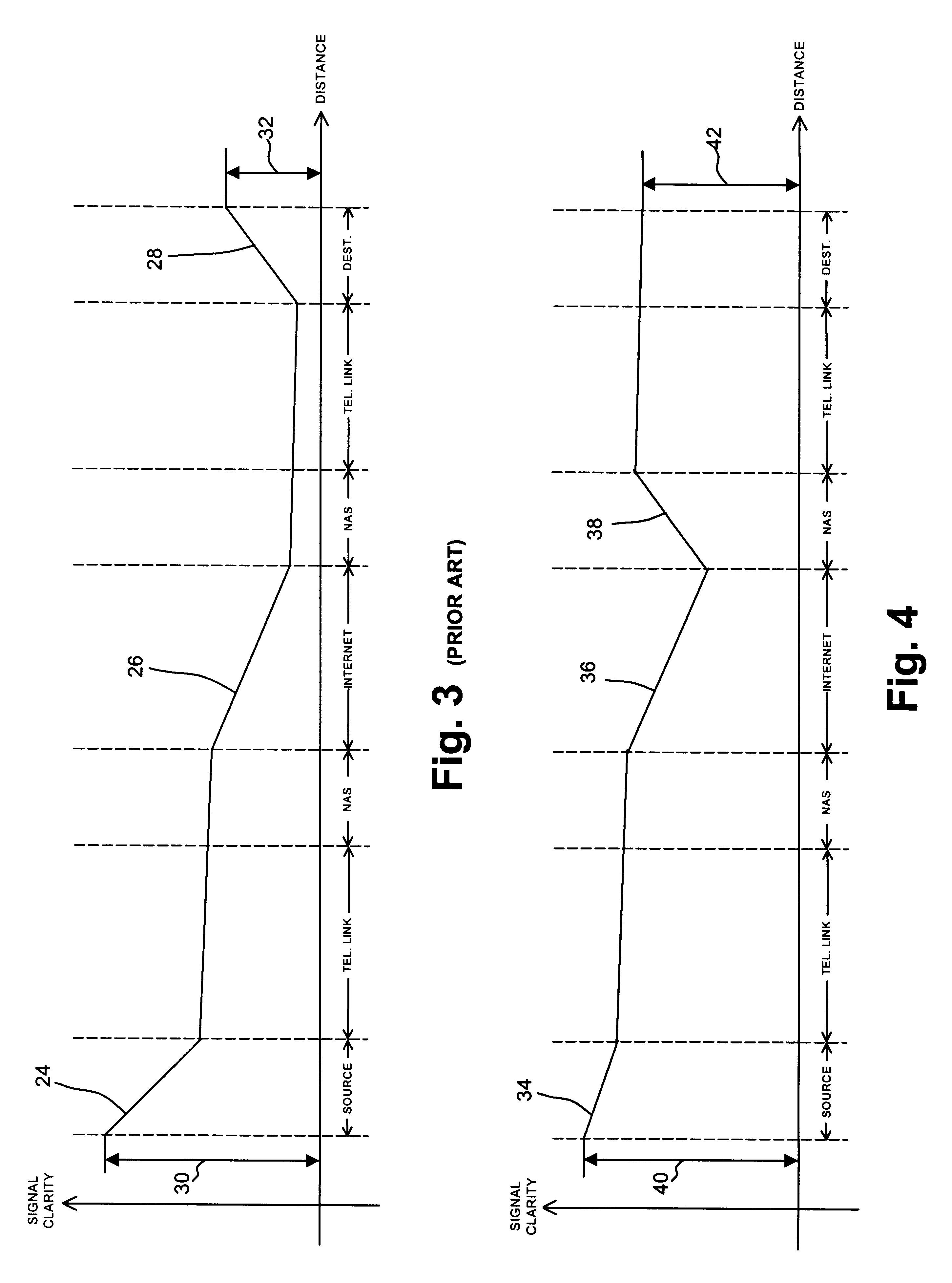Data and real-time media communication over a lossy network
a lossy network and data technology, applied in the field of telecommunications systems, can solve the problems of high packet loss and delay in the internet, preventing the successful widespread transmission of real-time media signals, and limited bit rate in the communication link
- Summary
- Abstract
- Description
- Claims
- Application Information
AI Technical Summary
Problems solved by technology
Method used
Image
Examples
Embodiment Construction
Referring to FIG. 1, the present invention may be implemented in a communication system in which source equipment 10 wishes to establish end-to-end communication of data over an internet 12 with destination equipment 14. Internet 12 is preferably a packet switched wide area network (WAN) or a combination of large computer networks joined together over high-speed data links. An example of one such computer network is the "Internet" (capital "I"), which is described in the above background section. However, internet 12 may equally be another wide or local area network.
As illustrated by FIG. 1, in one example configuration, internet 12 provides a high bit rate, high loss transmission channel. For instance, internet 12 may be assumed to provide a bit rate of 56 kbps in any direction. In addition, for purposes of this example, internet 12 may be assumed to suffer from a packet loss rate of up to 25% when congested.
Typically, source equipment 10 includes a personal computer that generates...
PUM
 Login to View More
Login to View More Abstract
Description
Claims
Application Information
 Login to View More
Login to View More - R&D
- Intellectual Property
- Life Sciences
- Materials
- Tech Scout
- Unparalleled Data Quality
- Higher Quality Content
- 60% Fewer Hallucinations
Browse by: Latest US Patents, China's latest patents, Technical Efficacy Thesaurus, Application Domain, Technology Topic, Popular Technical Reports.
© 2025 PatSnap. All rights reserved.Legal|Privacy policy|Modern Slavery Act Transparency Statement|Sitemap|About US| Contact US: help@patsnap.com



